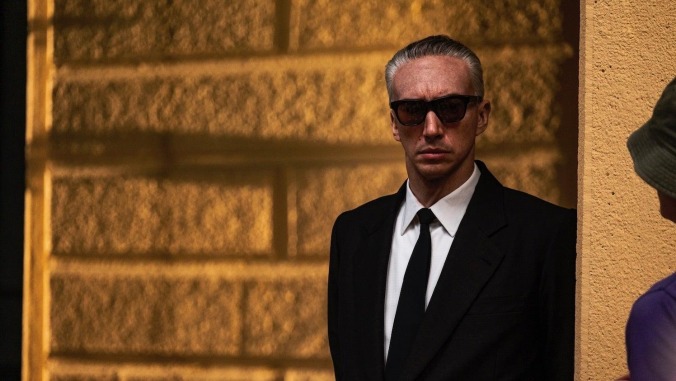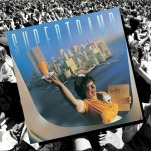How Ferrari's controversial CG crashes play a crucial part in the story
Michael Mann's "cheesy" crash scenes, famously defended by Adam Driver, force the viewer to experience Enzo Ferrari's headspace

There’s a scene in Michael Mann’s Ferrari where beleaguered, self-obsessed car-manufacturer Enzo Ferrari (Adam Driver) is looking over race car designs alongside his son, Piero, whom he had with his mistress, Lina Lardi (Shailene Woodley), and has been raising in secret—from both the public and his wife, Penélope Cruz’s Laura Ferrari—for years. As Enzo gives his son a quick lesson on how engines work, Piero notes that, in addition to being fast, his father’s cars also tend to look nice. Enzo, perhaps loving the boy in this moment as much as he has ever loved anyone else, proudly notes that when a thing works better, “it’s usually more beautiful to the eye.”
Intentionally or not, Mann illustrates that philosophy at two key points in the film, specifically the only two moments where Ferrari’s cars are depicted not as loving expressions of engineering beauty but as unconvincingly rendered CG blobs: when they crash. Driver got some headlines earlier this year when he responded to a snotty question about the “cheesy” CG crashes with a pointed “fuck you, I don’t know,” but what the “cheesy” questioner missed is the fact that the crashes actually put you into Enzo Ferrari’s headspace perhaps better than anything else in the film.
The first crash occurs early on, when Formula 1 driver Eugenio Castellotti is testing a new Ferrari car for the upcoming season. With his team in a slump, Ferrari is desperate to prove that this car can keep up with his rivals at Maserati, so he pushes Castellotti to go faster and faster until the driver hits a curb and rolls the car. Castellotti is immediately killed and thrown from the car, with his body tumbling like a ragdoll. It’s shocking, and the visual of Castellotti flipping through the air is so jarringly different from every other visual in the movie until that point that there’s a good chance it will pull even the most committed viewer out of the film.
But Driver’s Ferarri seems almost completely unfazed. A man just died in front of him, driving his car, following his instructions to go faster, but all Ferrari sees is that the test failed. Therefore—for both Ferrari and the audience, albeit in different ways—the car is no longer “beautiful to the eye.” Like, it literally looks bad when the car fails, putting you in Ferrari’s head and tricking you into seeing the tragedy as little more than a technical failure. A person is dead, sure, but the car failed and the CG was ugly.





















![Rob Reiner's son booked for murder amid homicide investigation [Updated]](https://img.pastemagazine.com/wp-content/avuploads/2025/12/15131025/MixCollage-15-Dec-2025-01-10-PM-9121.jpg)


















